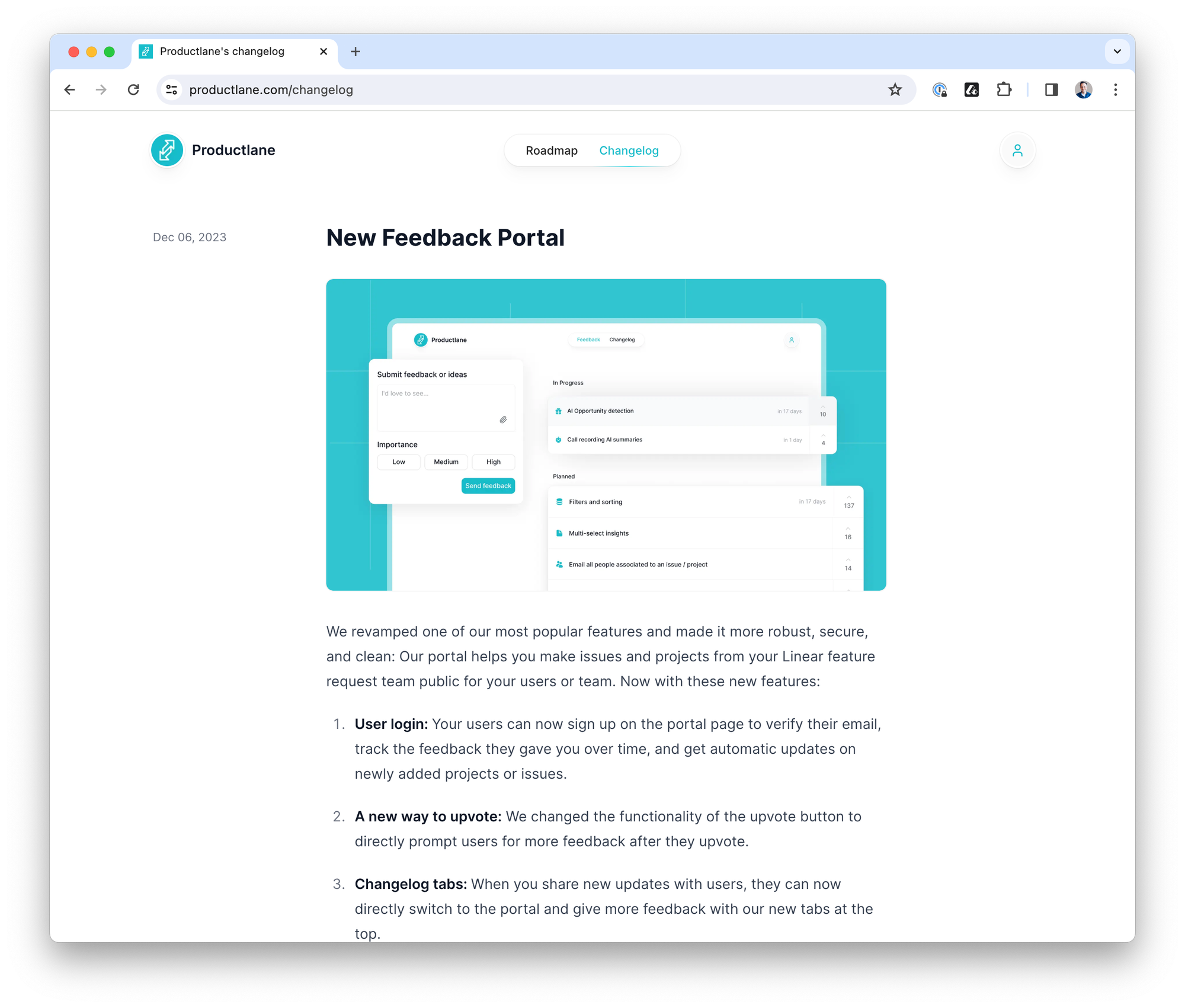Changelogs over presentations
My call for change from creating presentations to embracing more efficient project management tools for better outcomes.

When was the last time you were excited about a presentation? I'll take the excitement about a new product launch, but for anything else, I very much doubt it. The term 'death by PowerPoint' exists for a good reason!
For too long now, PowerPoint has been the go-to tool for presentations. Its ubiquity is undeniable, but it's time to ask: is our reliance on PowerPoint doing more harm than good?
The problems with PowerPoint
As a tool to create, PowerPoint is simple, has a short learning curve and is available to the majority of the workforce. I'm including Google Slides in this and even Canva, just to make it clear it's not just one company responsible for the status quo!
Despite its widespread use, PowerPoint's effectiveness in a modern business setting is increasingly questionable. The real issue is its static nature; once a presentation is created, it becomes a fixed snapshot of information that quickly grows outdated. This leads to the significant risk of circulating obsolete or inaccurate data, potentially leading to misinformed decisions.
There's also the tendency to show things better than the reality. Problems are edited into challenges and bad news can be downplayed. Consultants and agencies - is this why you use it so much?
Moreover, the process of creating PowerPoint slides is notoriously time-consuming, often diverting valuable resources from more productive tasks.
Are they really that effective? Presentations tend to encourage passive consumption rather than active engagement, leading to less effective communication and collaboration.
In essence, while PowerPoint was once a revolutionary tool, it now often hinders the dynamic and fluid exchange of ideas essential in today's fast-paced business environment.
“PowerPoint presentations too often resemble a school play - very loud, very slow, and very simple.” - Edward Tufte, Data Visualisation Expert.
So what's the alternative?
Show the actual work
Radical thinking here, I hear you say. The thing about showing the actual work in especially an agency setting is that design is messy! It's never finished and even a tidy spreadsheet or document just doesn't have the gloss of a nicely crafted presentation, does it?
Sure, if you're looking at the detail, zooming in on say a Figma design is wholly advantageous than seeing a screenshot of it (people always want to zoom in!).
I think asking the question of why we can't show the actual work, opens up the question of why work isn't recognised by clients or stakeholders - it's a technology shift that hasn't firmly hit the board room.
And to be fair, even some documents fall short on what the goal is, where we are in a project, what the problems there are and how long it is until the next milestone.
Embrace project management tools
In contrast to the extendability of PowerPoint presentations, modern project management tools like Linear and Confluence offer dynamic and collaborative solutions. These platforms are designed for the task at hand. Real-time updates, seamless integration with existing workflows and that ensures all team members have access to the most current information.
You may even be able to remove the meeting if they're covered in a daily email update, or timely notifications throughout the day.
This approach significantly reduces the risk of outdated or incorrect data circulating among the team. Furthermore, these tools are designed to streamline processes, eliminating redundant tasks such as constantly updating slide decks.
By incorporating project management tools into review meetings and demos, teams can enhance efficiency, improve accuracy, and foster a more engaged and collaborative environment.
The shift from presentations to these versatile platforms represents a step towards a more agile, transparent, and effective way of managing projects and communicating within teams.
But if you really want to take things into 2024, consider the changelog.
Consider the changelog
Changelogs represent a transformative approach to documenting and sharing project progress. Unlike static presentations, changelogs are dynamic and continuously updated, offering a real-time view of the developments and changes within a project. You can even keep them internal facing.
It's a product-centric idea that has wider appeal. Whenever my car gets an update, I get notified of release notes. I'm excited for what's new and it serves as an audit log of what's changed. That's a changelog in the most easy to use format.

This living document ensures that all team members have access to the latest information, drastically reducing the likelihood of misunderstandings or the spread of outdated information.
Changelogs also promote transparency and accountability within teams, as they provide a clear and chronological record of decisions, updates, and accomplishments. This level of openness not only enhances team collaboration, but also builds trust and alignment among team members.
By adopting changelogs, teams can move away from the inefficiencies of traditional presentation methods towards a more integrated, accurate, and live documentation of their work, making it an indispensable tool in modern project management.

If you're interested in changelogs, check out Product Lane as a SaaS solution to start with.
The traditional presentation is a relic of a bygone era, ill-suited for the dynamic and fast-paced world of modern business. The adoption of integrated project management tools and even changelogs are not just an upgrade; it's a necessity for those who wish to remain agile and accurate in their decision-making.
“The greatest enemy of communication is the illusion of it.” - William H. Whyte
I encourage you to consider this shift in your approach to project documentation and presentation.
Let's start a conversation on how we can collectively improve our project management processes. Let's chat on X.




